
Phnom Penh
Phnom Penh, the capital of the Kingdom of Cambodia, is a charming city. Being the combination of Asian features, the elegance of Indochina land and the hospitality of Cambodians, Phnom Penh puts strong impression on tourists at the first look.
- Location: Located on the banks of the Mekong River
- Status: the nation’s center of economic and industrial activities, the center of security, politics, cultural heritage, and diplomacy of
- Cambodia. Population: 2,301,725
- Area: 678.46 square kilometers
- Religions: Buddhism Known as the “Pearl of Asia”
- Well-known for many beautiful and historical architecture and attractions
- The wealthiest and most populous city in Cambodia and is the country’s political hub.
Located on the meeting points of three big rivers: Bassac, Mekong and Tonle Sap, Phnom Penh is also called as “four-river-surrounded city” (Chatomuk). Phnom Penh is not also the capital but also political, economic and cultural center of Cambodia. With the total are of about 678.46 square kilometers and the population of about 2 millions people, Phnom Penh is the largest city in Cambodia. It is a nice French-built city with long history since 1434.
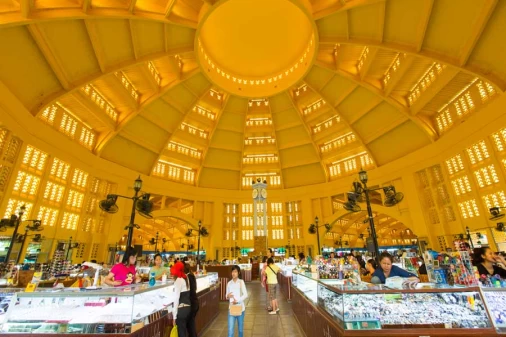
Central Market (Phsar Thmei)
A landmark building in the capital, the art-deco Psar Thmei (literally ‘New Market’) is often called...
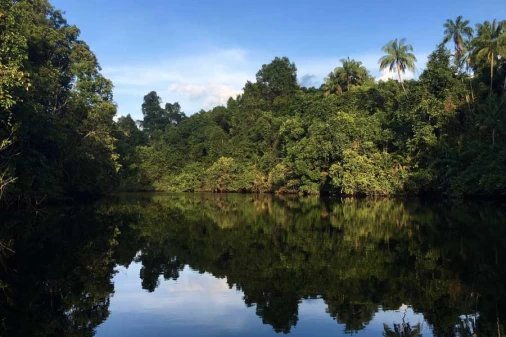
Chhrouy Chek
Chhrouy Chek is a name of the place that was built for stocking water to irrigate the rice fields. Its...
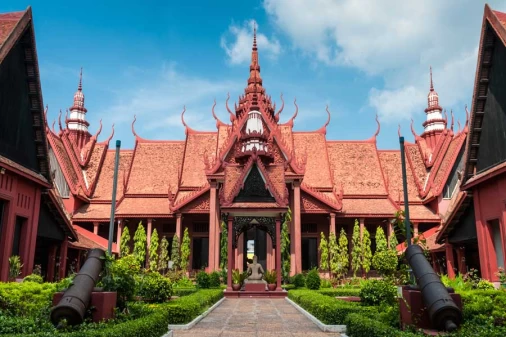
History Museum
Overview of The National Museum Phnom Penh Located near the Royal Palace, Cambodia’s National Museum...
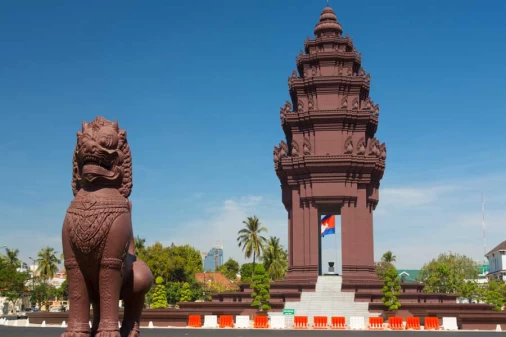
Independence Monument
An Angkorian style tower, the inimitable place in the whole city, located in the heart of the capital....
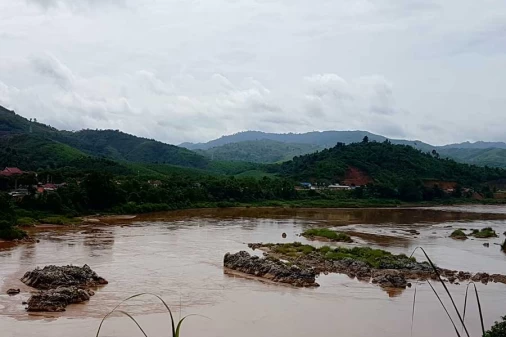
Koh Pdao
Koh Pdao is an island located in Kratie Province in the Northeast of Cambodia.Koh Pdao is well known...
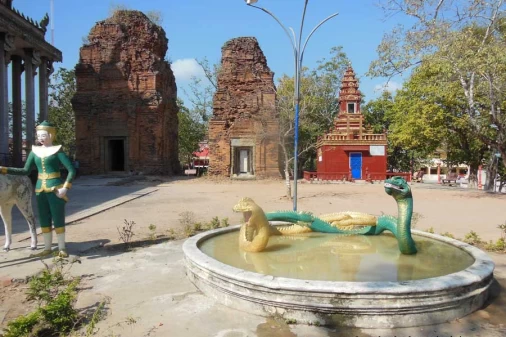
Neang Khmao Temple
Neang Khmao temple is located in Rovieng commune, Samrong district, off National Road 2, about 27 kilometers...
Frequently asked questions
Vibrant, bustling Phnom Penh is the heartbeat of Cambodia. This sprawling capital, spread out beside the banks of both the Tonlé Sap and Mekong Rivers, is a city of wide central boulevards and skinny back alleys, where modern and old collide.
The Royal Palace complex is the city’s top attraction but for anyone interested in exploring Cambodia’s 20th-century history, Phnom Penh is also a vital stop, for it is home to two of the country’s most sobering places to visit.
The Killing Fields of Choeung Ek and Tuol Sleng Museum (the prison of S-21) both provide an insight into the reign of terror this nation suffered under Khmer Rouge rule.
Travelers heading out to Cambodia’s premier tourist attraction of Angkor Wat also benefit hugely from a stop in the capital, as the wonderful National Museum of Angkor is here.
For more ideas on your sightseeing options, read our list of the top attractions and things to do in Phnom Penh.
1. Admire the Architecture of the Royal Palace
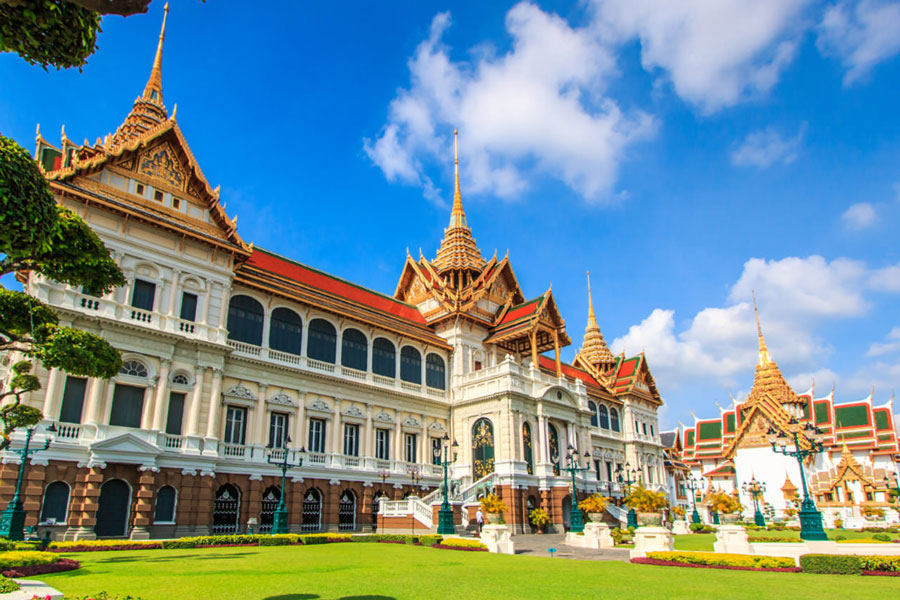 The highlight of Phnom Penh is the beautiful Royal Palace – the seat and residence of Cambodia’s royal family since the 1860s.
The highlight of Phnom Penh is the beautiful Royal Palace – the seat and residence of Cambodia’s royal family since the 1860s.
The spired-roof pavilions of the complex are an excellent example of classic Khmer architecture.
Both the Throne Hall area and the Silver Pagoda – set within manicured gardens – are open to the public for visiting. The Throne Hall was built in 1917, replacing an earlier wooden structure.
The Silver Pagoda is famed for being the home of the Emerald Buddha statue and a mammoth 90-kilogram Gold Buddha statue studded with thousands of diamonds.
The Silver Pagoda escaped the brutal destruction of the Khmer Rouge reign and so still contains some beautiful artifacts. The interior ceiling mural depicts the Cambodian epic poem, the Reamker, which is based on the story of the Indian Ramayana.
Address: Sothearos Boulevard, Phnom Penh
2. See the Exhibits inside the Cambodia National Museum
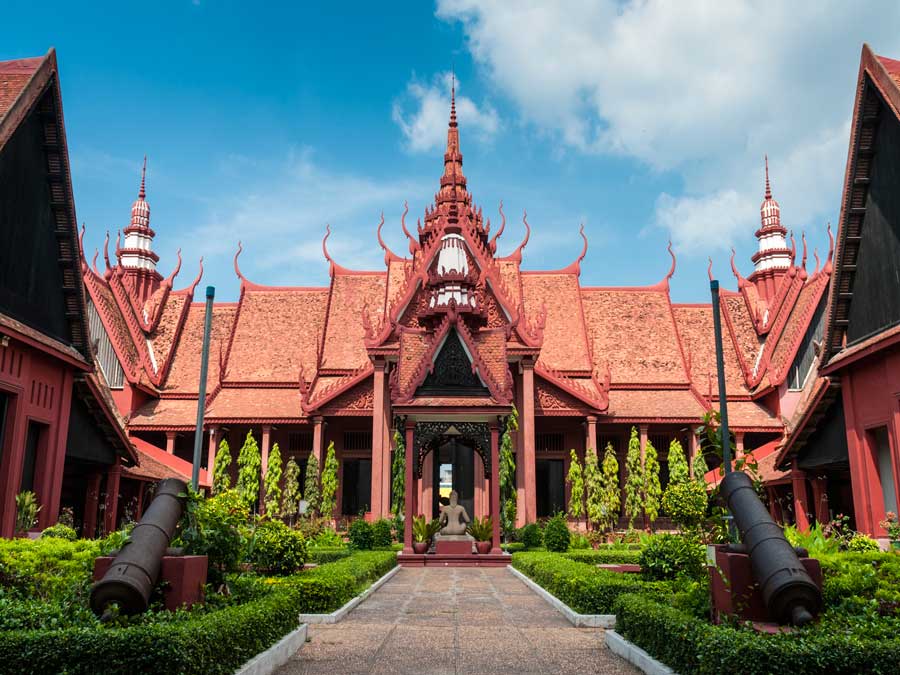 The traditional Khmer building that houses the national collection was built in 1920.
The traditional Khmer building that houses the national collection was built in 1920.
Inside, the dazzling array of ancient Khmer artistry, with more than 1,800 objects on display, is a must visit for anyone with an interest in Cambodian history.
The major highlights of the museum galleries are the Vishnu head excavated near the vast temple complex of Angkor Wat; the incredible Angkorian collection, with statues from the temples of Koh Ker and Angkor Thom; and the large exhibit of pre-Angkorian artifacts that trace Cambodia’s Funan and Chenla periods.
Address: Street 13, Phnom Penh
3. Visit the Killing Fields of Choeung Ek
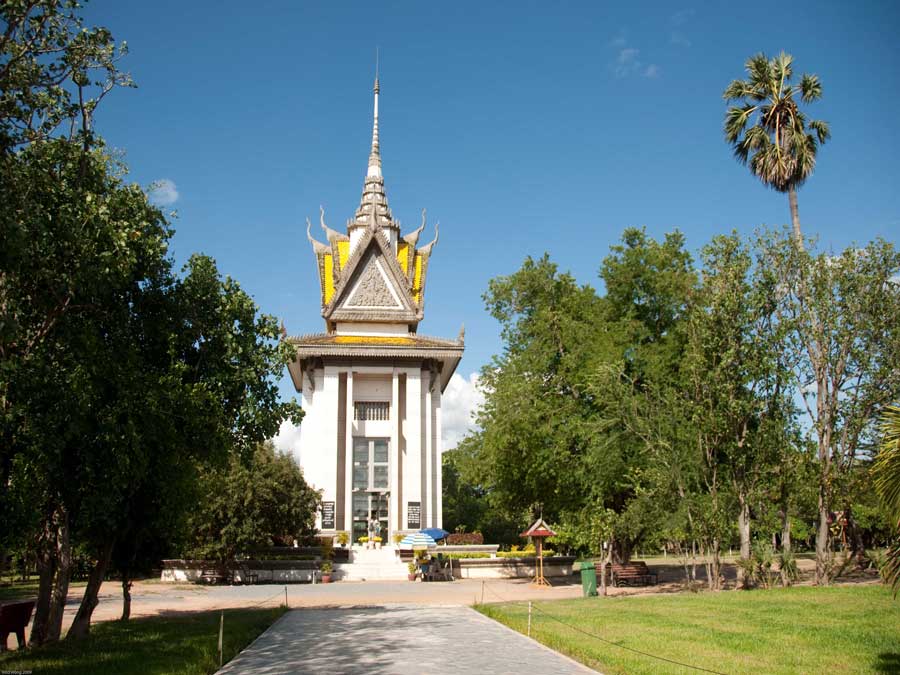 The Killing Fields of Choeung Ek are a somber reminder of the terror of the Khmer Rouge whose brutal regime, intending to turn Cambodia into a socialist agrarian society, ruled the country between 1975 and early 1979.
The Killing Fields of Choeung Ek are a somber reminder of the terror of the Khmer Rouge whose brutal regime, intending to turn Cambodia into a socialist agrarian society, ruled the country between 1975 and early 1979.
In under four years, it’s estimated that between one and three million Cambodians were killed under Pol Pot’s authoritarian command.
Many perished because of famine and disease, but also hundreds of thousands of Cambodians – intellectuals, educated people such as teachers and doctors, regime opponents, and simply anyone suspected of being an opponent – were murdered.
Here at Choeung Ek, it’s estimated that 17,000 people met their death. The victims here came from S-21, the Khmer Rouge’s high-security prison that is now Tuol Sleng Museum.
There are 129 mass graves here, 86 that have been excavated, exhuming the remains of 8,985 people. At the center of the area is a memorial stupa that contains more than 8,000 skulls.
A visit here is an entirely sobering experience that will aid in your understanding of this tumultuous period in Cambodia’s modern history. Choeung Ek lies off Monireth Boulevard.
If you want to truly understand what happened here and the horrors of the Khmer Rouge regime, The Killing Field and Toul Sleng Genocide Museum (S21) Tour can help. During this tour, a driver will pick you up and drive you to the Choeung Ek Genocidal Center, 14 kilometers away south of Phnom Penh, where you’ll spend two hours exploring the former orchard that became the site of the mass graves. You’ll then head back to the city and the Tuol Sleng Genocide Museum, set inside the former high school turned high-security prison.
4. View Tuol Sleng Museum
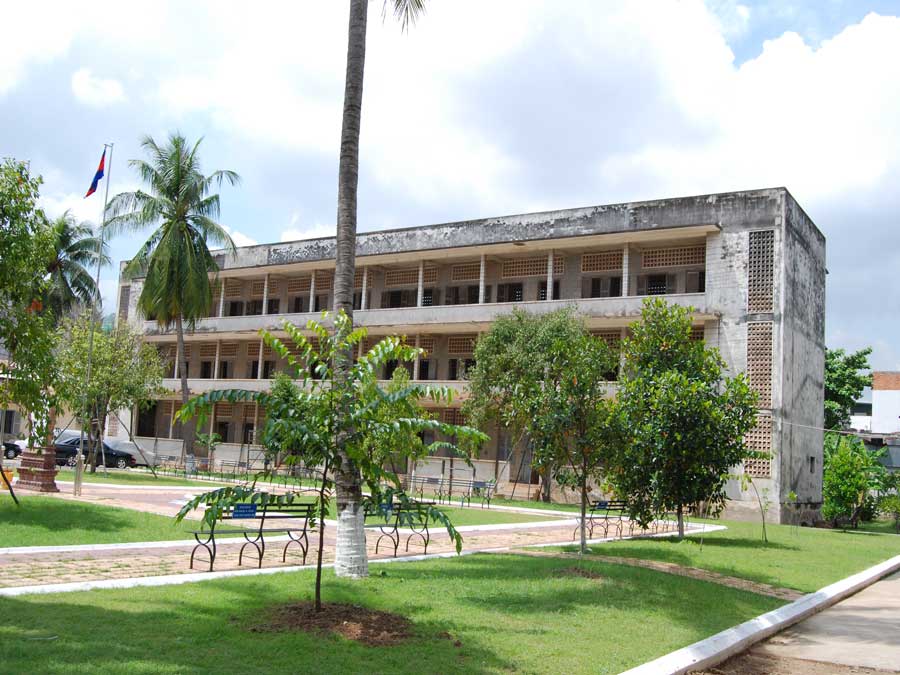 It was here, in the Khmer Rouge’s Security Prison S-21 that some of the regime’s worst torture atrocities were carried out. More than 17,000 people passed through these gates between 1975 and 1978, accused of betraying the revolution in some way.
It was here, in the Khmer Rouge’s Security Prison S-21 that some of the regime’s worst torture atrocities were carried out. More than 17,000 people passed through these gates between 1975 and 1978, accused of betraying the revolution in some way.
Nearly all prisoners brought here were once themselves members of the Khmer Rouge who were turned on during one of the regime’s many internal purges.
The visiting experience is made ever more visceral by the displayed photographic evidence hanging on the walls of the sparse cells next to empty beds. S-21 was exceedingly well-managed by Comrade Duch (the head of the prison) who made sure that extensive records were kept. As the prison was hastily abandoned when the Vietnamese took Phnom Penh in 1979, the detailed notes and photographs have survived.
Address: Street 113, Phnom Penh
5. Cruise on Phnom Penh’s Rivers
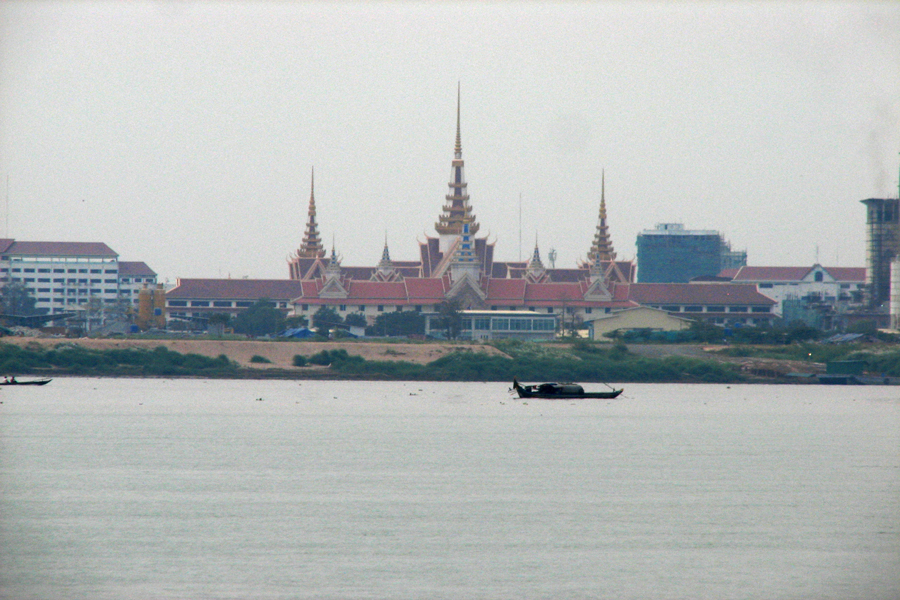 Phnom Penh is a riverine town, and one of the most relaxing ways to go sightseeing in the city is to take to the water. There are regular sunset cruise tourist boat departures from the riverfront between 5pm and 7.30pm, which head along the Tonlé Sap and Mekong Rivers.
Phnom Penh is a riverine town, and one of the most relaxing ways to go sightseeing in the city is to take to the water. There are regular sunset cruise tourist boat departures from the riverfront between 5pm and 7.30pm, which head along the Tonlé Sap and Mekong Rivers.
Alternatively, you can also hire a private boat nearby to head out on the water at any time of the day (you’ll want to put your bargaining hat on though, if you’d like to hire a private boat).
This is a great way to get away from the bustling motorbike-clogged streets for an hour and soak up the gentler pace of local river life.
Address: Tourist Boat Dock, Sisowath Quay, Phnom Penh
6. Wat Phnom
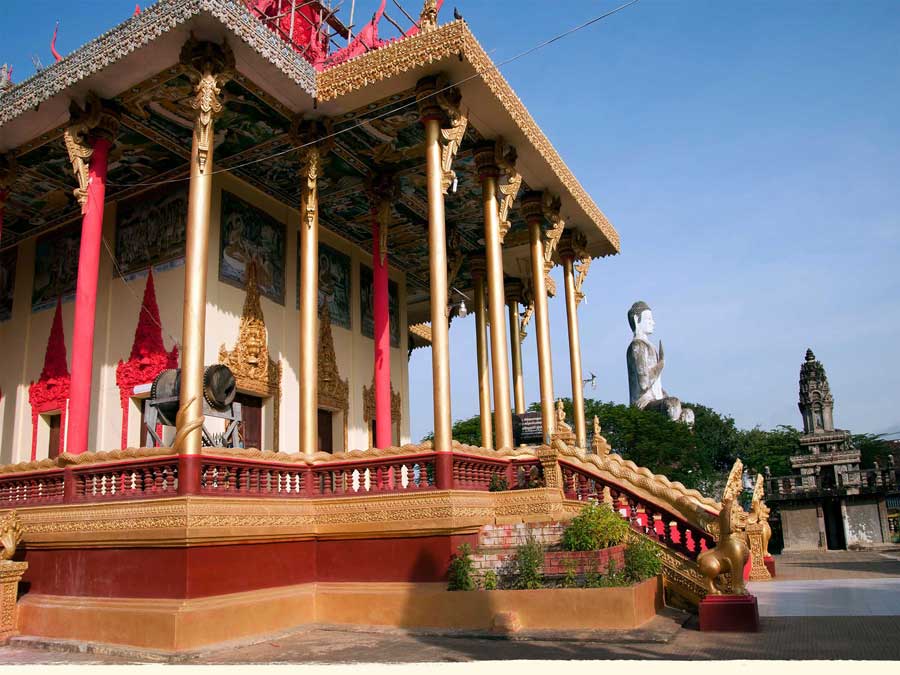 Phnom Penh is decidedly flat. The only rise in the landscape here is the 27-meter-high hillock that is home to the temple of Wat Phnom.
Phnom Penh is decidedly flat. The only rise in the landscape here is the 27-meter-high hillock that is home to the temple of Wat Phnom.
The first religious building on this spot is thought to have been constructed in the 14th century and has been rebuilt several times, with the current main temple sanctuary dating from 1926.
This is one of the city’s most important Buddhist temples and is often bustling with locals leaving offerings here and praying at the various shrines that surround the main sanctuary.
Address: Norodom Boulevard, Phnom Penh
7. See the Stupas of Wat Ounalom
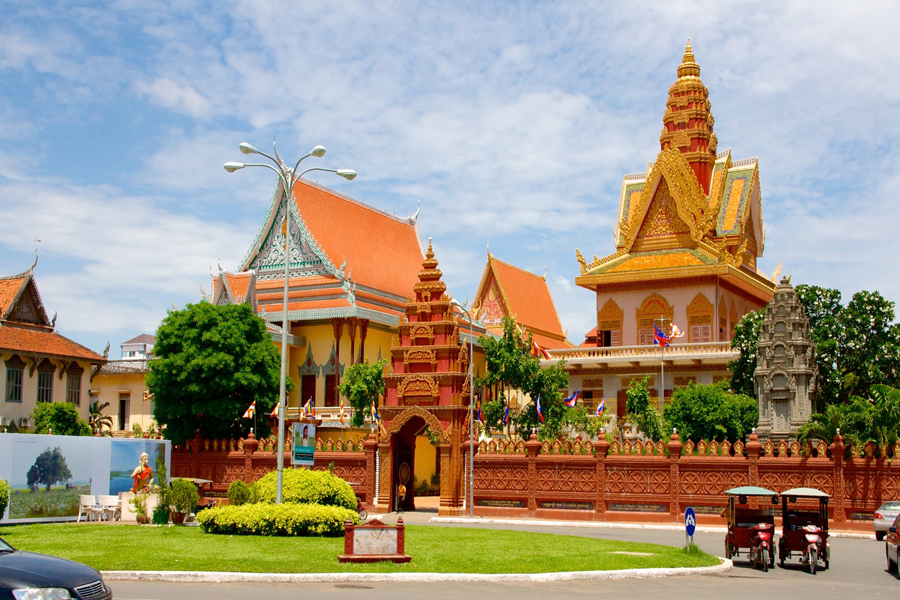 The most important temple complex in Cambodia, Wat Ounalom is the headquarters of Buddhism in the country. A stupa within the complex contains one of the Buddha’s eyebrow hairs.
The most important temple complex in Cambodia, Wat Ounalom is the headquarters of Buddhism in the country. A stupa within the complex contains one of the Buddha’s eyebrow hairs.
The wat was first situated here in 1443 and although it suffered considerable damage during the Khmer Rouge era, with many of its statues and religious iconography destroyed, it is thriving again today.
Of particular note for visitors is a beautiful Buddha statue in the main building’s third floor that has been reassembled after being smashed to pieces by the Khmer Rouge and a statue commemorating Huot Tat, the fourth patriarch, who was murdered by Pol Pot, on the 2nd Floor.
Address: Sothearos Boulevard, Phnom Penh
8. Shop in the Russian Market
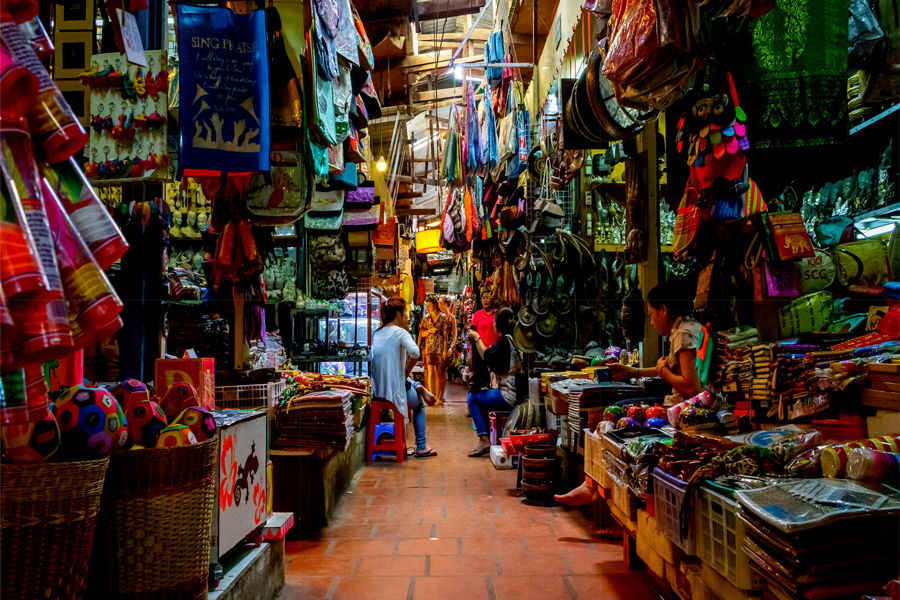 Phnom Penh’s chaotic and lively Russian Market hums with local life, and produces some great shopping opportunities as well.
Phnom Penh’s chaotic and lively Russian Market hums with local life, and produces some great shopping opportunities as well.
You’ll find everything here from tacky souvenirs (much made in neighboring Thailand rather than locally produced) to beautifully-made local wooden handicrafts and Cambodian silks, along with bundles of stalls selling exceedingly cheap clothing.
This is not the place to come for some midday browsing, as temperatures skyrocket within the market, so aim for an early morning visit. The market opens for business at 6am.
This is also just the place to put your haggling hat on and try out your bargaining skills.
The market’s real name is Psar Tuol Tom Pong, but earned its moniker due to the number of Russian foreign residents of Phnom Penh who used to shop here.
Address: Street 155, Phnom Penh
9. Experience the Psar Thmei Shopping Scene
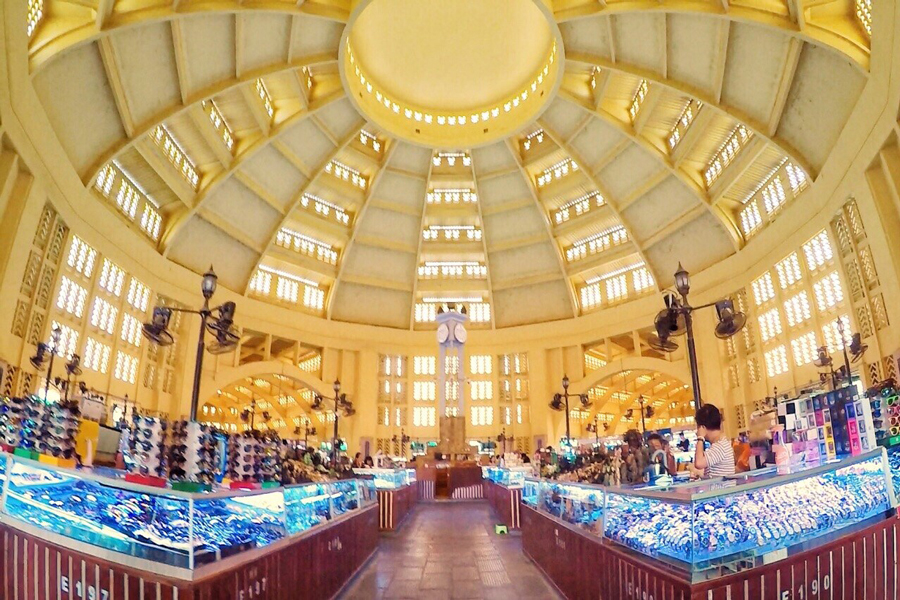 The distinctive domed building that holds the central Psar Thmei market was built in 1937 in Art Deco style and dominates Phnom Penh’s central city. There are excellent opportunities for soaking up a slice of local life here with the market’s huge array of local produce on display and plenty of hustle and bustle.
The distinctive domed building that holds the central Psar Thmei market was built in 1937 in Art Deco style and dominates Phnom Penh’s central city. There are excellent opportunities for soaking up a slice of local life here with the market’s huge array of local produce on display and plenty of hustle and bustle.
Everything is sold here, from fresh fruit and vegetables to jewelry and clothing, and the market is abuzz with energy from early in the morning to early evening.
It’s a great place for an aimless wander, and keen photographers will find plenty of colorful scenes to capture.
Address: Street 126, Phnom Penh
10. See Phnom Penh’s Independence Monument
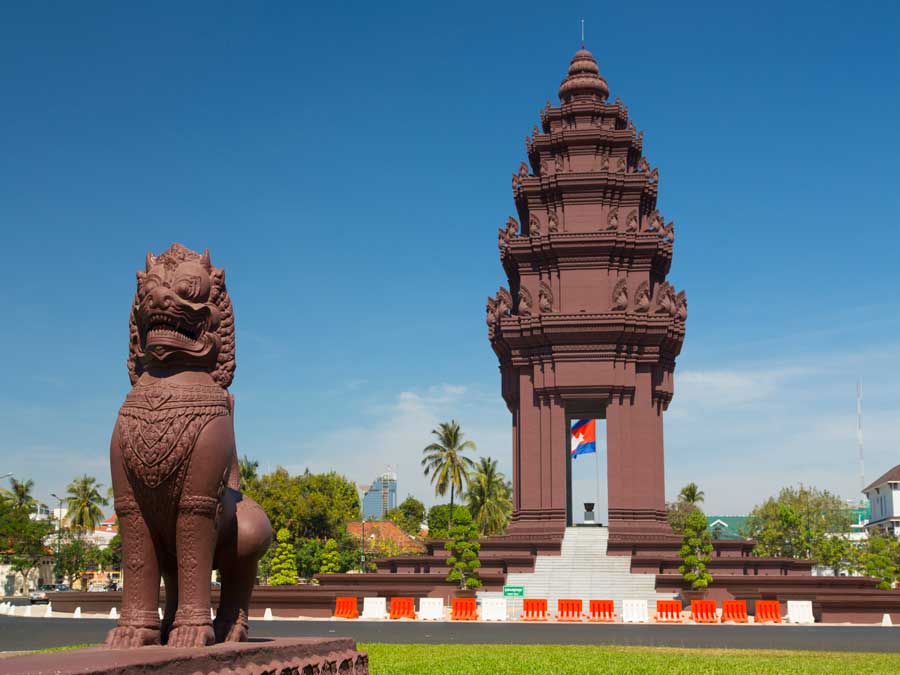 The patch of grass that intersects Sihanouk and Norodom Boulevards is home to Phnom Penh’s Independence Monument, built to celebrate Cambodia’s independence from French colonial rule in 1953. The sandstone structure represents an Angkorian temple, intricately decorated with nagas (multi-headed snakes).
The patch of grass that intersects Sihanouk and Norodom Boulevards is home to Phnom Penh’s Independence Monument, built to celebrate Cambodia’s independence from French colonial rule in 1953. The sandstone structure represents an Angkorian temple, intricately decorated with nagas (multi-headed snakes).
As well as commemorating the nation’s independence, the monument is now also a memorial to Cambodia’s war-dead.
Just a short stroll from the monument is the green stretch of Wat Botum Park where you’ll find the Cambodia-Vietnam Friendship Monument, built in 1979 after Vietnamese forces had defeated the Khmer Rouge.
Address: Sihanouk Boulevard, Phnom Penh
11. Watch the Cambodian Living Arts Performance
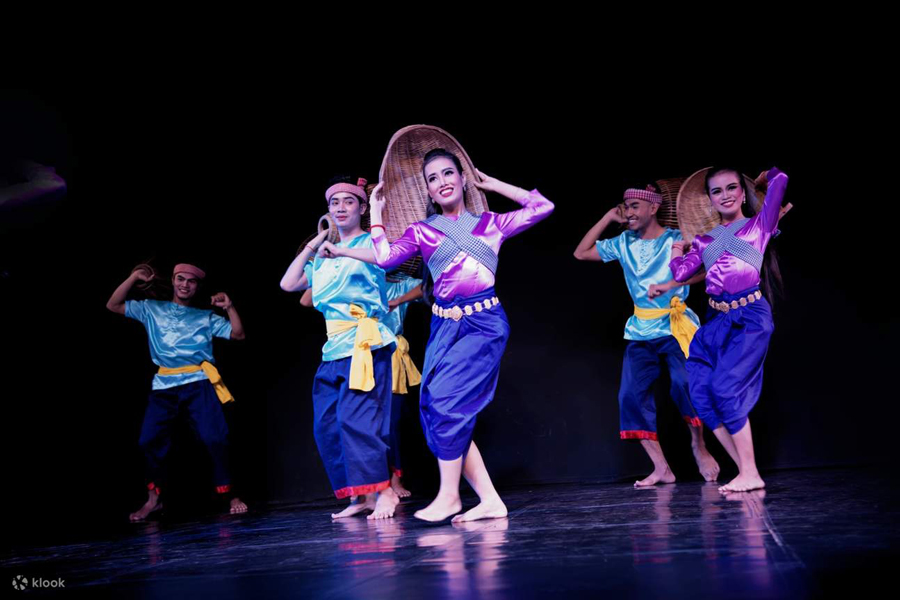 Traditional Khmer classical dance originated in the royal courts and wasn’t introduced to the general public until the mid-1900s.
Traditional Khmer classical dance originated in the royal courts and wasn’t introduced to the general public until the mid-1900s.
Today, a number of theatrical performances can be seen in Broadway-like shows around Cambodia, where costumed dancers recreate epic poems and legends through elaborate moves.
If you’re in Phnom Phen, a great way to see this first hand is to join the Experience Cambodian Living Arts, Dance Show tour.
The tour starts at the National Museum of Phnom Penh, where you’ll be able to discover the gardens and see stunning examples of Khmer art and architecture. The tour then continues on to a dinner theater, where you’ll experience dining while enjoying a Cambodian traditional dance and music performance on stage.
12. Stroll Sisowath Quay
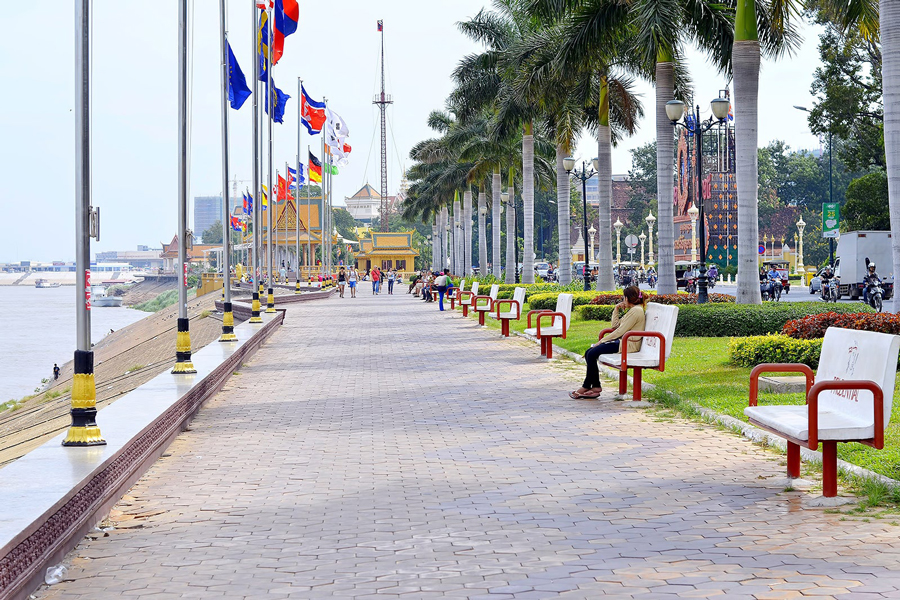 Sisowath Quay is Phnom Penh’s most popular promenading spot and is always busy at sunset with walkers and joggers.
Sisowath Quay is Phnom Penh’s most popular promenading spot and is always busy at sunset with walkers and joggers.
This riverside strip, rimmed with palm trees, stretches north for three kilometers from the Royal Palace. It’s a great spot for watching and taking photographs of boats on the Tonle Sap River.
There are cafés, as well as street stalls selling food dotted along the route as well, so it’s a popular spot for simply hanging out, particularly in the early evening.
A stroll here is easy to combine in a sightseeing itinerary between visits to the Royal Palace and Wat Phnom, just west of the quay’s northern end.
13. Cycle around Koh Dach & Koh Okhna Tei Islands
Koh Dach and Koh Oknha Tei (both more commonly referred to as Silk Island by foreign visitors) are two Mekong River islands linked together by a bridge, sitting about 10 kilometers north of the central city.
The islands are known by their “Silk Island” moniker due to the large community of silk weavers who live on Koh Dach and Koh Oknha Tei. It’s normal for visitors here to be invited into local workshops to watch weavers at work and look at the silk products they’re selling.
Both islands make a good option for a day trip. There’s not a huge amount to do here, but it’s a tranquil rural break within easy reach of the big city. The easiest way to get around on the island if you want to explore them fully is to rent a cycle.
Ferries leave regularly to both Koh Dach and Koh Oknha Tei from three separate ferry stops on the river banks opposite the islands. Some tour boat operators in Phnom Penh also offer tours here.
14. Take in the Views from the Temples of Oudong
In Oudong, 43 kilometers north from central Phnom Penh, the stupas and temples atop the hill of Phnom Preah Reach Throap are well worth a trip from town, particularly if you want to enjoy some excellent vistas from the hill top, across the surrounding countryside.
The large temple of Vihear Preah Ath Roes with its 20-meter-high Buddha is the hill top’s main attraction.
Other temples and stupas here range in age from the 17th century to the modern era. Some of the buildings with the most interesting intricate facade decorations include the Ang Doung stupa built by King Norodom and the Mak Proum stupa built by King Monivong.
15. Take a Day Trip to Phnom Chisor
About 70 kilometers south of central Phnom Penh, the temple of Phnom Chisor sits on the 133-meter-high hilltop of Chisor mountain. The brick temple was built by the Angkorian Empire KIng Suryavarman I and is dedicated to the Hindu gods Vishnu and Shiva. It dates from the 11th century.
The staircases to get up to the temple are quite an effort if it’s hot, but the sprawling views of the surrounding landscape below with its patchwork of lush green farming plots and rice fields between trees, are well worth it.
Most people hire a private driver or take a tour to come here, as there’s no direct transport. Try to get here early to beat the heat.
Day 1: Arrive in Phnom Penh
 Upon arrival, you will be met outside the baggage claim area by your guide who will escort you to a waiting vehicle for your transfer to downtown with a brief introduction en route. Your guide will be holding a welcome signboard with the AsiaTourAdvisor Logo & your name. During the drive your guide will provide an introduction to Phnom Penh.
Upon arrival, you will be met outside the baggage claim area by your guide who will escort you to a waiting vehicle for your transfer to downtown with a brief introduction en route. Your guide will be holding a welcome signboard with the AsiaTourAdvisor Logo & your name. During the drive your guide will provide an introduction to Phnom Penh.
The riverside capital of Phnom Penh, once known as “The Pearl of Asia” and long considered the most beautiful French-built city of the Orient, is a charming and captivating city. The old French ochre-coloured colonial buildings are now being filled with trendy cafes, boutiques and art galleries and many traditional ornate temples still remain. The bustling squares and frangipani-lined boulevards create an atmosphere that is unlike any other city in South East Asia. Rich in history, Phnom Penh has a number of cultural and historical sites including the National Museum, Royal Palace and Silver Pagoda, and offers an insight into its darker past with the haunting Killing Fields and Tuol Sleng Museum.
Day 2: Phnom Penh tour
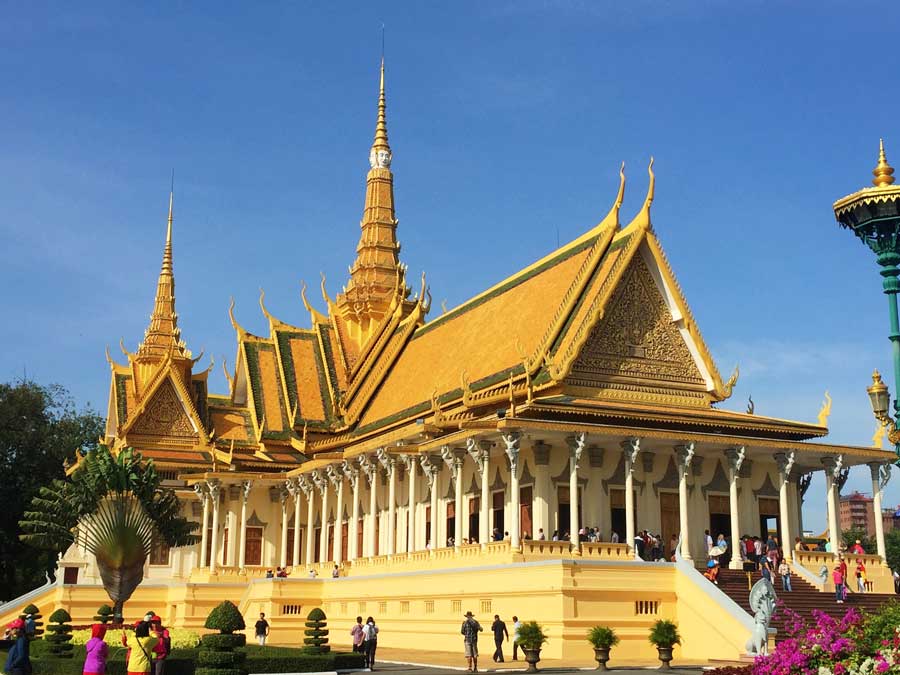 The capital city of Phnom Penh was once considered the loveliest city of Indochina. Despite its recent turbulent history, it still maintains considerable charm. A city tour acquaints us with some major sights of Phnom Penh. The private quarters of the Royal Palace are now home to the royal family and are therefore very close to the public.
The capital city of Phnom Penh was once considered the loveliest city of Indochina. Despite its recent turbulent history, it still maintains considerable charm. A city tour acquaints us with some major sights of Phnom Penh. The private quarters of the Royal Palace are now home to the royal family and are therefore very close to the public.
At the northern area of the palace grounds is Silver Pagoda, the most sacred temple in the country. And visit the National Museum, which is dedicated exclusively to Khmer art and sculpture. The majority of the exhibits are from the Angkor period from 9th to 15th century, but some date from as early as the 4th century.
Day 3: Phnom Penh – The Killing Fields
 The peaceful stretch of green fields of Cheung Ek may not indicate what kinds of horrors have taken place there. Situated 17km from Phnom Penh town, Cheung Ek was made famous by the movie “The Killing Fields”. Nowadays, a large memorial has been built to commemorate the 17,000 victims who died here under the reign of Khmer Rouge leader, Pol Pot.
The peaceful stretch of green fields of Cheung Ek may not indicate what kinds of horrors have taken place there. Situated 17km from Phnom Penh town, Cheung Ek was made famous by the movie “The Killing Fields”. Nowadays, a large memorial has been built to commemorate the 17,000 victims who died here under the reign of Khmer Rouge leader, Pol Pot.
The remnants inside the memorial and the mass graves that dot the area remind you of the suffering of the victims. This journey into Cambodia’s past will provide you with a background on the cruelty of the Khmer Rouge regime. It will also give you an appreciation of the struggle that Cambodian people have faced and their tremendous courage to move on and rebuild their nation.
Day 4: Phnom Penh Departure
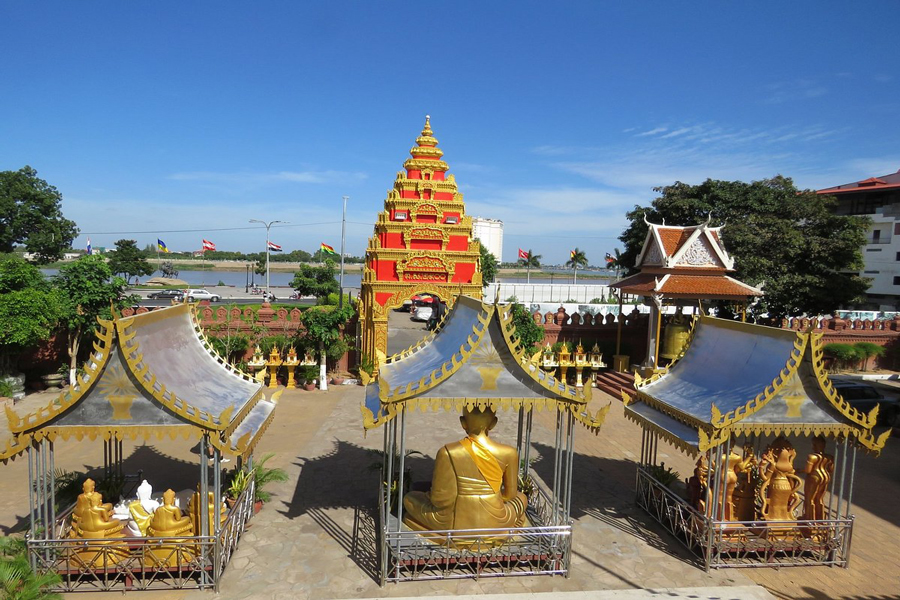 The final day of your Cambodia Holiday is free time spent at your hotel until your Cambodia tour guide arrives to transport you to the airport for your flight to next destination. Asia Tour Advisor can arrange additional customized trips for you should you require it.
The final day of your Cambodia Holiday is free time spent at your hotel until your Cambodia tour guide arrives to transport you to the airport for your flight to next destination. Asia Tour Advisor can arrange additional customized trips for you should you require it.
Finish unforgettable Cambodia tour with Asia Tour Advisor Co.,. Good bye & see you in the next time! AsiaTourAdvisor can arrange additional customized trips for you if the above itinerary does not match your expectations.
1. Grilled pork on skewers
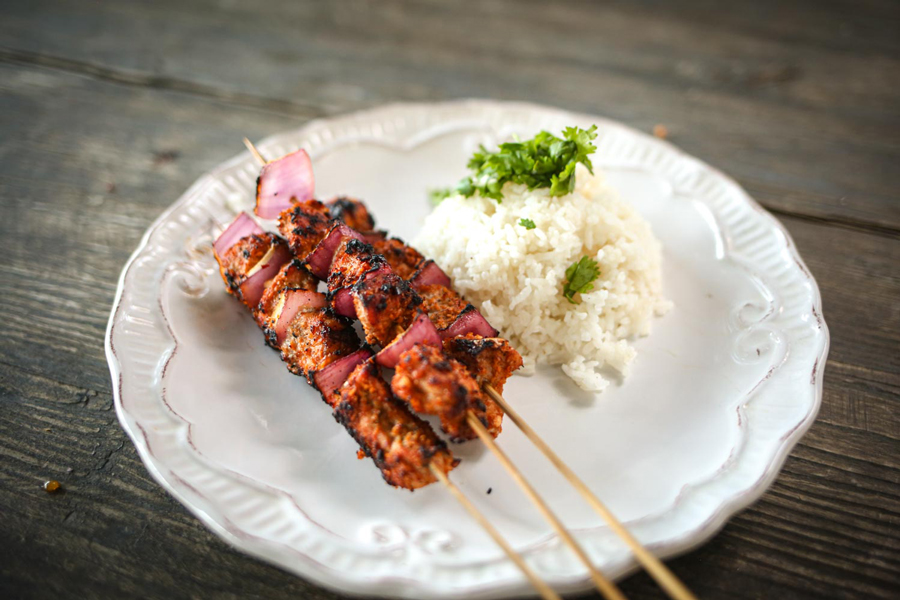 Drawn by the mouth-watering aromas of this snack, travelers can easily spot portable carts with grilled pork on skewers everywhere in Phnom Penh. Usually there are two kinds of skewers, one served with pickle salad with piles of veggies together with rice, and another loaded with herbs and condiments. The former is a prominent breakfast that gives locals a boost of energy for the day, while the latter is a popular on-the-go snack. Try both for a complete experience of a Cambodian BBQ.
Drawn by the mouth-watering aromas of this snack, travelers can easily spot portable carts with grilled pork on skewers everywhere in Phnom Penh. Usually there are two kinds of skewers, one served with pickle salad with piles of veggies together with rice, and another loaded with herbs and condiments. The former is a prominent breakfast that gives locals a boost of energy for the day, while the latter is a popular on-the-go snack. Try both for a complete experience of a Cambodian BBQ.
2. Lok lak
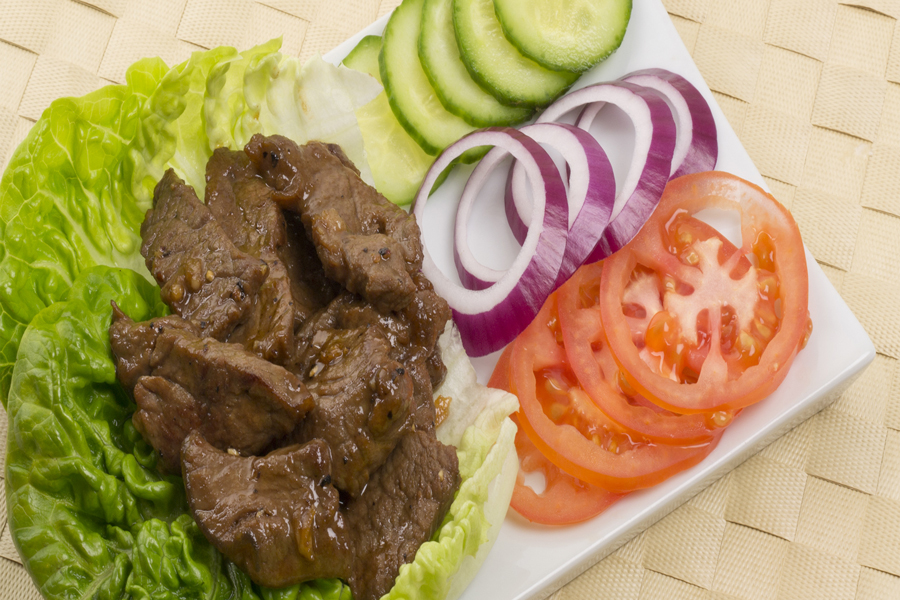 This classic Southeast Asian treat has its roots in Vietnam. However, once lok lak landed in Cambodia, it became overwhelmingly popular. One possible reason is the juicy beef – a favourite local meat – that comes in colossal portions. This stir fried meat is typically topped with a salad of sweet tomato, crispy lettuce, raw cucumber and fresh onion, all served seasoned with lime juice and black pepper. Travellers can opt for the traditional way of eating – wrapped up in a lettuce leaf in the way of classic Cambodian culture.
This classic Southeast Asian treat has its roots in Vietnam. However, once lok lak landed in Cambodia, it became overwhelmingly popular. One possible reason is the juicy beef – a favourite local meat – that comes in colossal portions. This stir fried meat is typically topped with a salad of sweet tomato, crispy lettuce, raw cucumber and fresh onion, all served seasoned with lime juice and black pepper. Travellers can opt for the traditional way of eating – wrapped up in a lettuce leaf in the way of classic Cambodian culture.
3. Balut
Balut refers to the fertilized embryo of a duck. This snack can be found in neighboring Southeast Asian countries like the Philippines and Vietnam, but the one in Cambodia is kept simple: instead of being covered with a wide selection of herbs and condiments, only a little ganish is served alongside the duck egg. It is an all time favorite of local Cambodians as it is nutritious and rich in protein.
4. Steamed pork bun
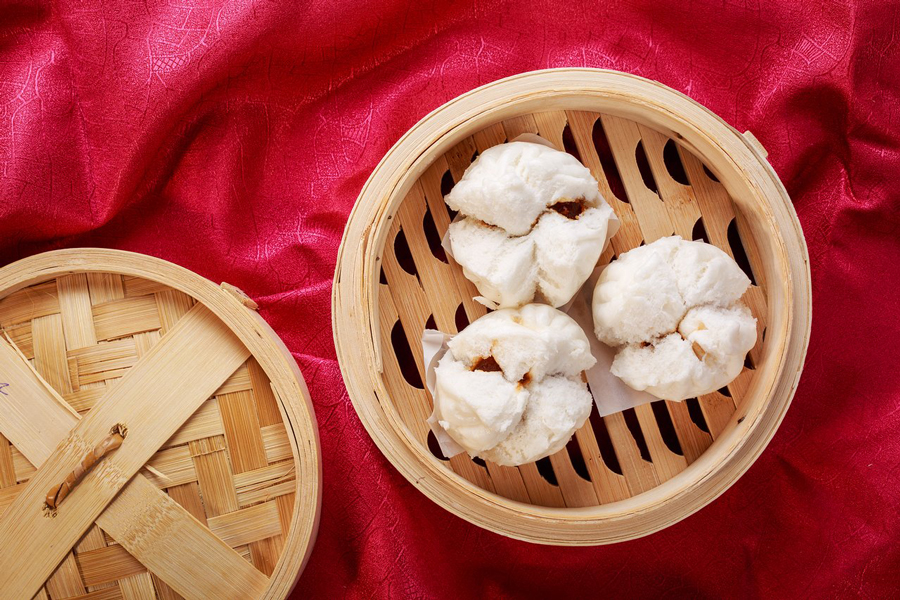 Whenever travellers come across a moving cart with a steamer, it is time for a steamed pork bun! The hard-boiled bun stuffed with eggs and pork encapsulates the traditional taste of Cambodia without adding any twist to the ingredients or unnecessary condiments. Although travellers always compare it with pork buns in China, the plain taste makes it a more easy-going afternoon snack. Don’t forget to remove the paper padding at the bottom before giving it a bite and never leave it go cold!
Whenever travellers come across a moving cart with a steamer, it is time for a steamed pork bun! The hard-boiled bun stuffed with eggs and pork encapsulates the traditional taste of Cambodia without adding any twist to the ingredients or unnecessary condiments. Although travellers always compare it with pork buns in China, the plain taste makes it a more easy-going afternoon snack. Don’t forget to remove the paper padding at the bottom before giving it a bite and never leave it go cold!
5. Pickled fruit
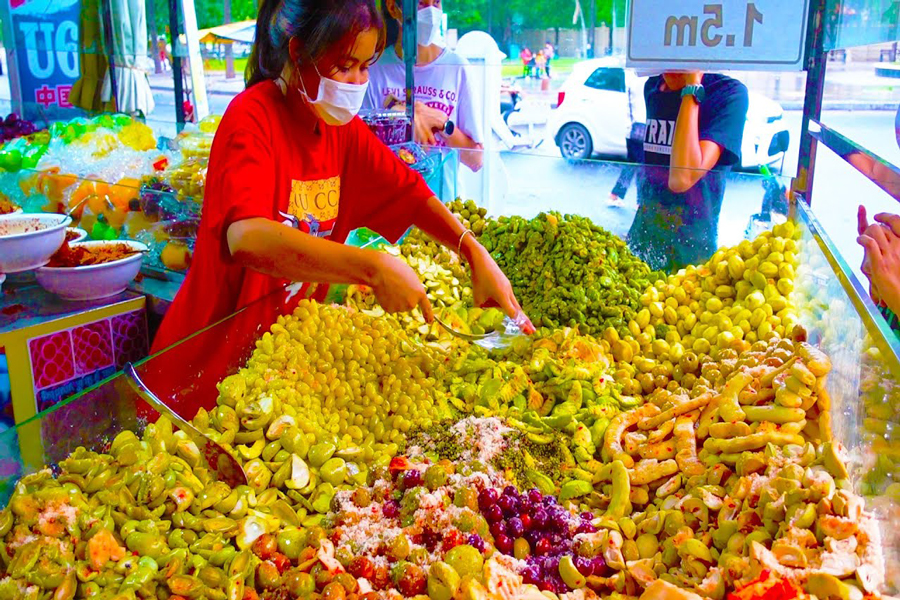 Cambodia is the land for pickled fruit, where travellers are able to find all kinds of pickled snacks including papaya, jujube, apple, cucumber and guava. Fresh fruit is also available for sale in the stalls. Travellers can always get a small bag of sauce that blends sugar, salt, chillies and other seasoning to dip the fruit in, while the the sweet, sour and subtly spicy flavor makes for fantastic finger food between meals.
Cambodia is the land for pickled fruit, where travellers are able to find all kinds of pickled snacks including papaya, jujube, apple, cucumber and guava. Fresh fruit is also available for sale in the stalls. Travellers can always get a small bag of sauce that blends sugar, salt, chillies and other seasoning to dip the fruit in, while the the sweet, sour and subtly spicy flavor makes for fantastic finger food between meals.
6. Grilled sausage on skewer
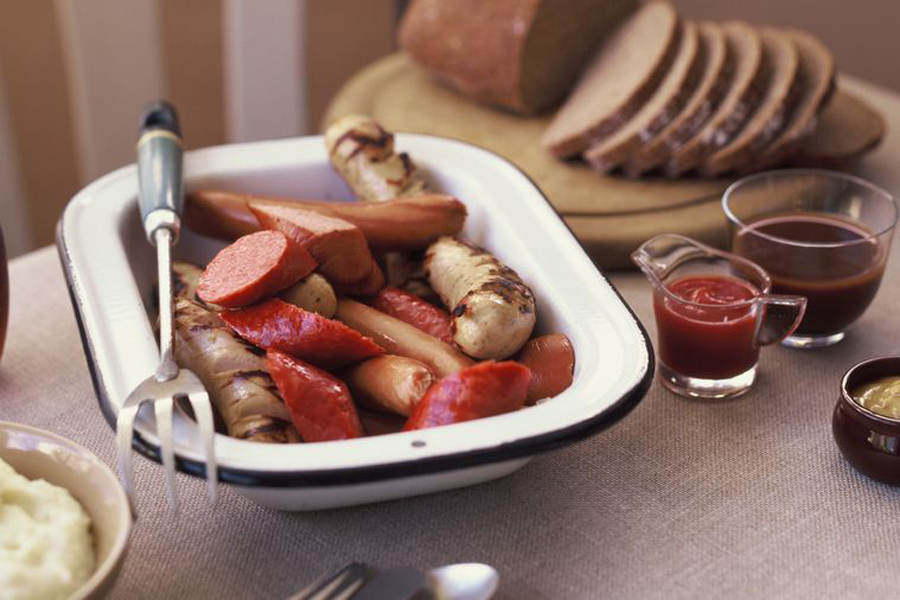 Barbecued food is famous all over Southeast Asia and Cambodia is no exception. Grilled sausage on skewer is one of the most recognizable street foods in the country. Most foodies may link sausages to saltiness, but sausages in Phnom Penh are no ordinary meat treat. The sweet and tender taste of the small sausage balls here impresses travellers all over the world, while the salad and baguette on the side makes for a perfect compliment to the fatty taste of the grill.
Barbecued food is famous all over Southeast Asia and Cambodia is no exception. Grilled sausage on skewer is one of the most recognizable street foods in the country. Most foodies may link sausages to saltiness, but sausages in Phnom Penh are no ordinary meat treat. The sweet and tender taste of the small sausage balls here impresses travellers all over the world, while the salad and baguette on the side makes for a perfect compliment to the fatty taste of the grill.
7. Grilled frog
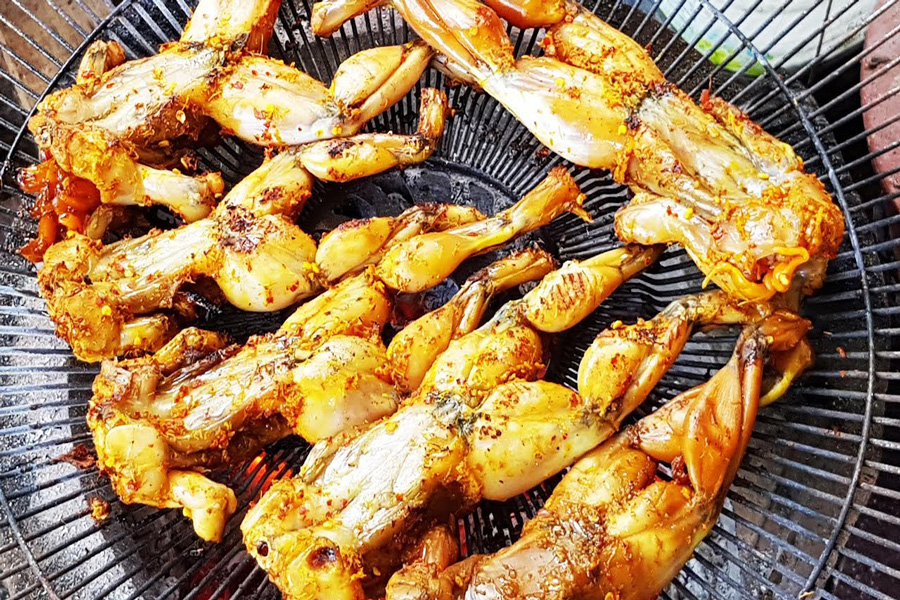 The idea of consuming frogs can be a little uneasy for travellers to grasp at first, but everyone will adapt to it after staying in Phnom Penh for a few days! Besides pork, chicken and beef, sometimes visitors can see a whole frog on the skewers of barbecue carts in the capital, which is actually a renowned street food in Cambodia. The taste of frogs is said to be juicy and tender, similar to that of chicken – of course!
The idea of consuming frogs can be a little uneasy for travellers to grasp at first, but everyone will adapt to it after staying in Phnom Penh for a few days! Besides pork, chicken and beef, sometimes visitors can see a whole frog on the skewers of barbecue carts in the capital, which is actually a renowned street food in Cambodia. The taste of frogs is said to be juicy and tender, similar to that of chicken – of course!
8. Iced coffee with milk
Coffee in Southeast Asia is made unique by its sweetness. Unlike coffee found elsewhere, coffee here is a bit sweet as the beans are slowly roasted after drying in the sun to preserve the sugars and oils. The signature iced coffee with milk in Phnom Penh is prepared by adding condensed milk. Foodies can control the degree of sweetness by stirring the condensed milk at the bottom of the glass.
9. Chive cake
Chive cake is another renowned Cambodian street food originating from China. Putting aside heavy seasoning and piles of herbs, the main ingredients are simply rice flour with chopped chives. However, instead of being plain and boring, the taste is surprisingly delicious. The pan-fried snack is crispy on the outside and chewy on the inside and is usually dipped in sweet and spicy fish sauce to deliver an identifiable Southeast Asian flavor.
Like the rest of the country, Phnom Penh is hot year-round, with only slight variations in temperature from month to month. During the hot season, which lasts February through May, you can expect two things: temperatures in the 30s and smaller crowds, as people stay away during the hotter, stickier months. So if you’re after special deals and discounted package tours, the hot season is the best time to visit Cambodia.
 Late November to January are the coolest months and the best time to visit. With very little rainfall and overnight temperatures that can get as low as 22 degrees Celsius, moving around feels much more comfortable. During the day, however, the temperatures stay around 26-28 degrees, with humidity around 70 percent.
Late November to January are the coolest months and the best time to visit. With very little rainfall and overnight temperatures that can get as low as 22 degrees Celsius, moving around feels much more comfortable. During the day, however, the temperatures stay around 26-28 degrees, with humidity around 70 percent.
While the cool season is usually the busiest time for tourism in Cambodia, this feels much different in Phnom Penh than in Siem Reap. Phnom Penh doesn’t receive as many visitors, so even though the city is busier in the cool months, it never gets uncomfortably crowded.
The one exception is in mid-November, during the Bon Om Touk or Cambodian Water Festival. The festival attracts tens of thousands of visitors every year, who come to the city for three days of boat races, floating lanterns, and free concerts on the riverbank in the evenings. The festival celebrates the end of the rainy season, and it’s a great way to appreciate the cultural heritage of Cambodia.
Throughout this article, we wish you to have an idea of how to travel to Phnom Penh for your best experience. In case you are looking for your own travel agent, who can offer a wonderful and hassle-free trip to Phnom Penh, please feel free to let us know. We always commit our best to make it your once-in-a-lifetime journey.
You may also like
Cambodia Overland Experience 11 Days
- Depart Time:Daily
- Starts/Ends:Phnom Penh/Siem Reap
- Tour type:Private Tours
- Travel Style:Heritage Tours, Culture & History
- Activities:Local culture tours, Cultural, religious and historic sites tours, Countryside and village visits tours
- Suitable for:Solo, Family, Group, Couple
- Age range:1 To 90 Years
- Operated in:English, French, Spanish, German, Italian
Simply Phnom Penh
- Depart Time:Daily
- Starts/Ends:Phnom Penh/Phnom Penh
- Tour type:Private Tours
- Travel Style:Heritage Tours, Culture & History
- Activities:Local culture tours, Cultural, religious and historic sites tours, Countryside and village visits tours
- Suitable for:Solo, Family, Group, Couple
- Age range:1 To 90 Years
- Operated in:English, French, Spanish, German, Italian
Truly Cambodia 11 Days
- Depart Time:Daily
- Starts/Ends:Phnom Penh/Phnom Penh
- Tour type:Private Tours
- Travel Style:Heritage Tours, Family Tours, Culture & History
- Activities:Walking tours, Local culture tours, Cultural, religious and historic sites tours, Countryside and village visits tours
- Suitable for:Solo, Family, Group, Couple
- Age range:1 To 90 Years
- Operated in:English, French, Spanish, German, Italian
 France
France  Spain
Spain  German
German  Italian
Italian 




 Vietnam Tours
Vietnam Tours  Cambodia Tours
Cambodia Tours  Myanmar tours
Myanmar tours  Thailand Tours
Thailand Tours  Laos Tours
Laos Tours